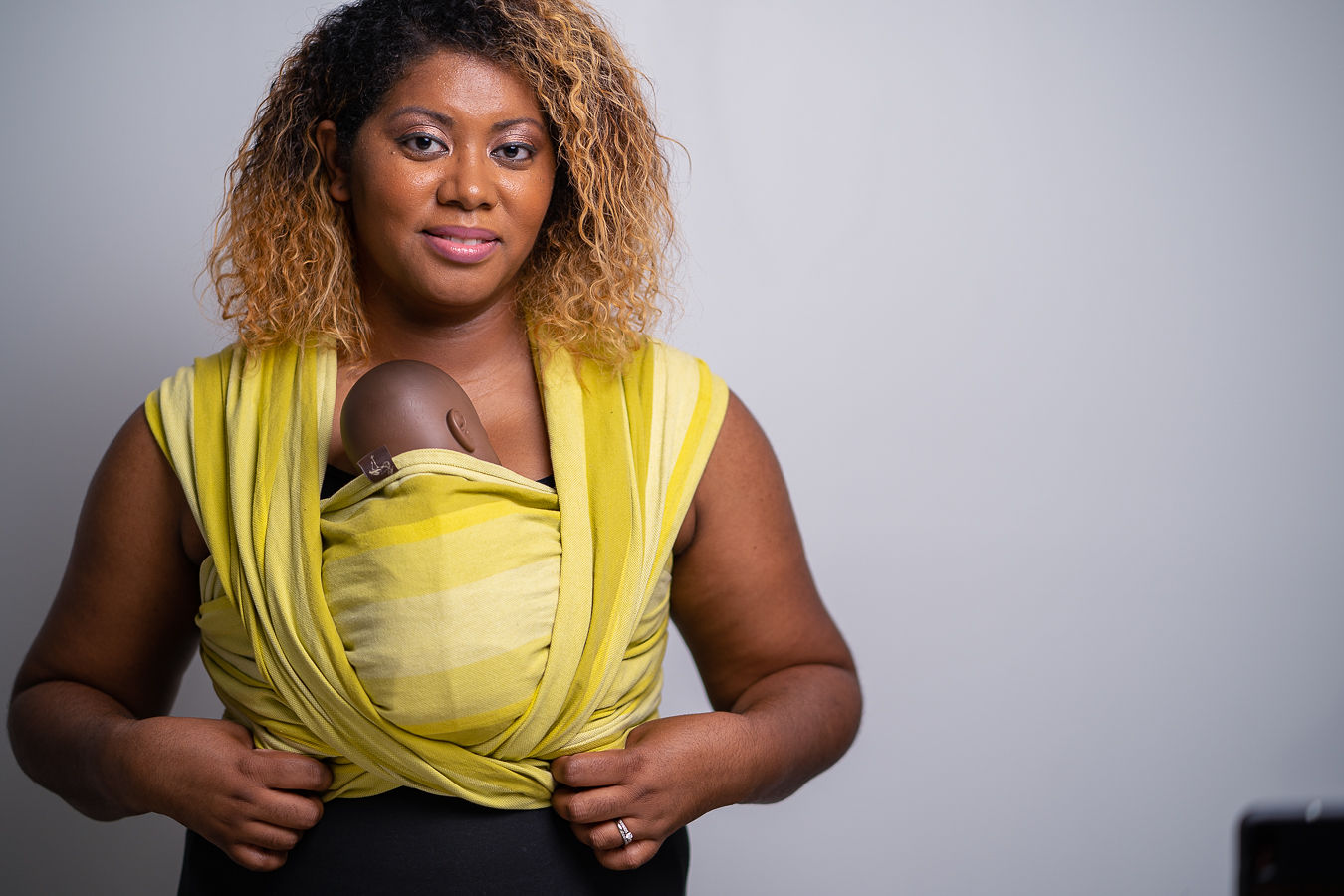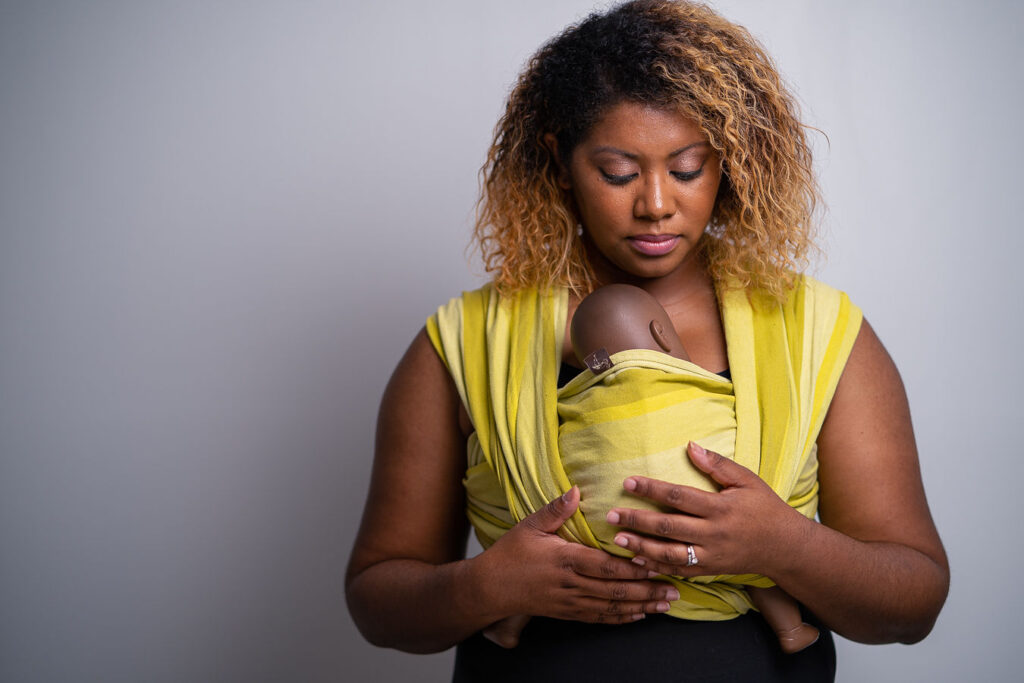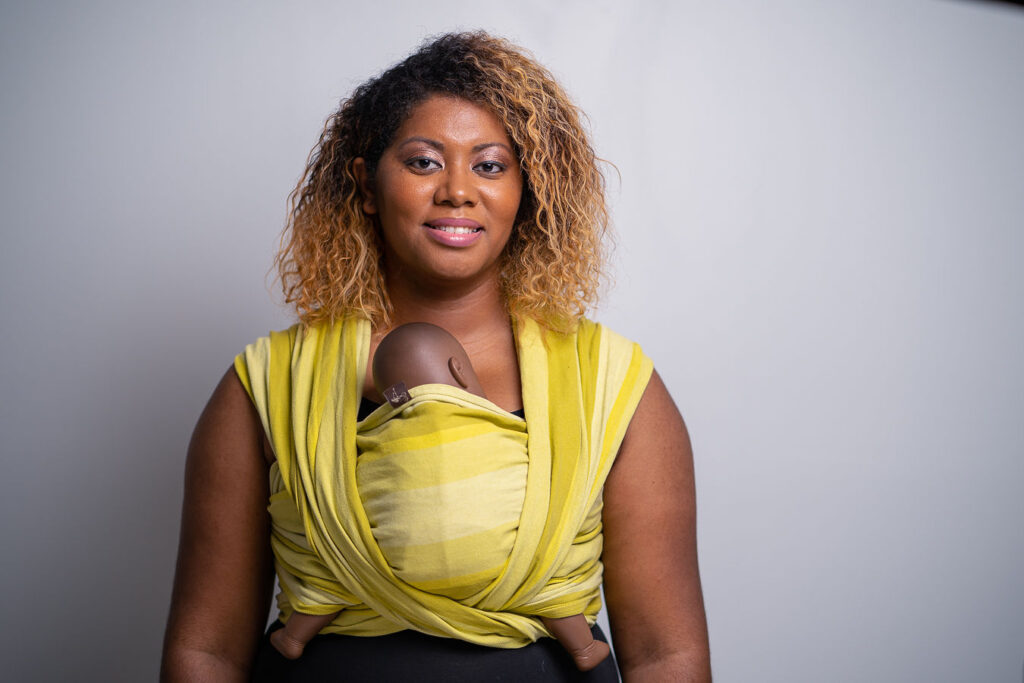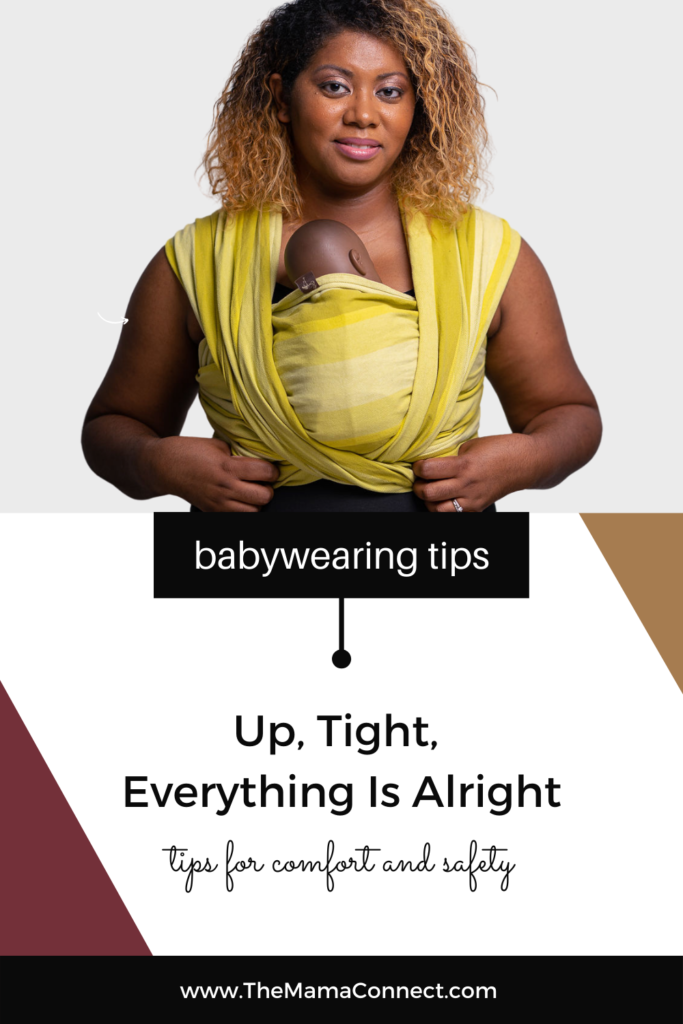
Has this ever happened to you? Once you finish wrapping your baby in your stretchy wrap, you start moving all about the house doing the laundry, washing the dishes, grabbing the mail, etc. And THEN, it happens… Your baby, who at first was resting their little sleepy head up on your chest, has somehow slid down towards your belly!
“Why did that happen? How is that possible?” you may ask yourself. I mean, you followed all of the steps in the carrier’s user manual and you even watched a couple of tutorials on YouTube. You are quite sure that you wrapped your baby correctly. And you know what? You probably did wrap your baby correctly. That’s not the question. The question is, “Did you wrap tight enough for security and comfort? And is your baby in a good position?” We often think that we are tying, pulling, or knotting way too snug and that baby is super uncomfortable or feels squished. While this may possibly be true sometimes, it is not nearly the case most of the time. It’s common practice to undertighten.
So, how can you remember to check to see if your carrier is tight enough? There are a couple of different ways I could explain this, but it wasn’t until I heard my children singing along to a classic Stevie Wonder song that it came to me. Not only is his song “Uptight” a great song and fun to dance to, but it is a great way to remember to check the tightness of your baby carrier and the position of your baby. Just think, “Up, Tight, Everything is Alright!”
Let’s take a closer look!
UP – Simply put, your baby should be close enough to kiss. “How high up” is really up to you, as long as your baby is above your breasts/chest-level and you are able to kiss them.
TIGHT – Simply put, your baby and the carrier should not slide down after you start moving around. If you notice that the carrier has loosened and your baby’s position has changed, this is definitely something that you would want to correct right away in order to prevent falls or injuries.
Now, this is a great time for me to take a moment to remind you to not only tighten for safety purposes, but also for comfort. Be careful not to over- or undertighten so much that you’re not comfortable in your carrier. Your carrier is a tool that helps support you as you do the work of holding your baby. So, as you consider the position of your baby, also check to make sure that you both are comfortable.
By now you’re probably wondering, “Well, what can I do to fix this so that my baby does not slip down again?” Here are some questions you can ask yourself as you troubleshoot, along with suggestions for fixing the problem:

Troubleshooting Question: What is my baby’s position?
How To Fix This: This is the best place to start, double-checking that your baby is in a deep-seated, spread squat, “M position”. Don’t forget to check to see if the baby’s airway is clear and if their head is close enough to kiss.
Troubleshooting Question: Is there too much extra fabric (slack) anywhere? In-between me and baby? Under my armpit?
How To Fix This: Bring the extra slack around to the knots and rings. Then tighten the carrier.
Troubleshooting Question: Are the knots open or closed? Can I make the knot tighter here?
How To Fix This: It’s okay to make your knots tight! It is what is making sure your carrier does not unravel. If you are having trouble getting the knot tight, I suggest exploring other types of knots.
Troubleshooting Question: Can the webbing or straps of my carrier (i.e. soft-structured carrier, onbuhimo, etc.) be tightened?
How To Fix This: Pull each strap just a little bit, alternating sides, until you achieve the desired tightness and comfort.
Troubleshooting Question: Is the waist band providing adequate support?
How To Fix This: Sometimes the waistband can be placed higher up or lower on your waist/torso, depending on the size of your baby and your body size and shape. Once there, check to make sure the waistband is flush against your body and straight – no curved or slanted lines created. Lastly, you may need to tighten or loosen the waist band’s webbing or knot.
Troubleshooting Question: Still too much slack in a back carry?
How To Fix This: No back tables. It is a natural inclination to want to bend ALL THE WAY over when your baby is on your back. We do this because we don’t want the baby to fall off, right? However, creating this “back table” does not allow for you to get your carrier tightened enough. Try this instead: stand up a little taller when backing. You will not only be able to avoid slack, but your baby may not try to push up off of you too!
Okay! Let’s summarize! When adjusting your baby carrier, think “Up, Tight, Everything is Alright!”. Just remember, what you think is tight is probably not tight enough. And don’t forget to adjust for the comfort of you and your baby.

Still having issues? Schedule a fit check or consultation with me! I am proud to be a Center for Babywearing Studies Trained Babywearing Consultant & “Babywearing Educator for the Culture”!
If you like this post, pin this picture!


